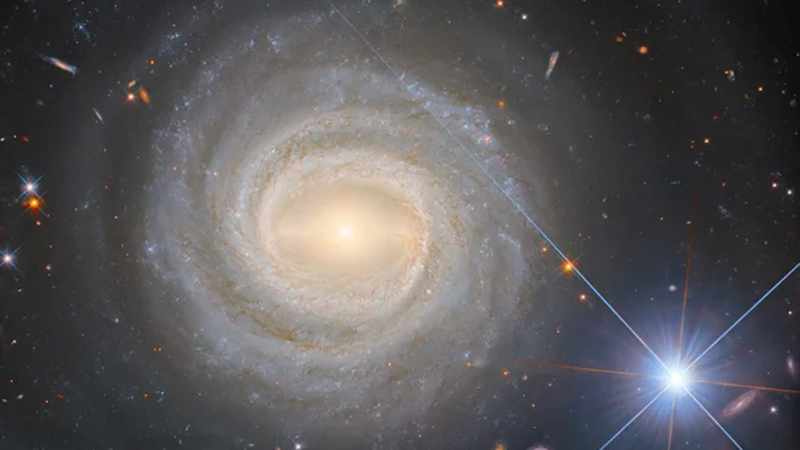A groundbreaking discovery has rocked the world of astronomy as researchers uncover a colossal explosion of cosmic gas emanating from the depths of the NGC 4383 galaxy, situated a staggering 54 million light-years away from Earth.
Published in the esteemed journal Monthly Notices of the Royal Astronomical Society, the study reveals the extraordinary findings of astronomers who have delved into the mysteries of the Virgo cluster, where the explosive event was unearthed. The expansive flow of gas, spanning an astonishing 20,000 light-years, has left scientists in awe of its magnitude.
Lead by astrophysicist Adam Watts from the University of Western Australia and the International Centre for Radio Astronomy Research, the research sheds light on the elusive nature of cosmic outflows. “Very little is known about the physics of outflows and their properties because outflows are very hard to detect,” Watts commented in a statement.
The velocity of the gas outflow, clocking in at a mind-boggling 447,000 miles per hour, further underscores the sheer force of the event. “The ejected gas is quite rich in heavy elements giving us a unique view of the complex process of mixing between hydrogen and metals in the outflowing gas,” Watts elaborated, highlighting the diverse chemical composition of the expelled matter, including oxygen, nitrogen, and sulfur.
Astronomers speculate that the expulsion of gas could significantly impact star formation within the NGC 4383 galaxy, potentially limiting the material necessary for celestial bodies’ birth. The spread of gas is attributed to a nearby supernova event, serving as a testament to the interconnectedness of cosmic phenomena.
Barbara Catinella, an astrophysicist at the University of Western Australia and the International Centre for Radio Astronomy Research, emphasized the pivotal role of cutting-edge technology in unraveling such cosmic enigmas. “We designed MAUVE to investigate how physical processes such as gas outflows help stop star formation in galaxies,” Catinella remarked, alluding to the instrumental role of the equipment used in collecting crucial data in Chile.
With aspirations to uncover the intricacies of gas outflows in the local Universe with unparalleled precision, astronomers remain poised for further revelations that promise to redefine our understanding of the cosmos.











Leave a Reply